CHOOSING YOUR SHOES BY YOUR FOOT (ARCH) TYPE
There are traditionally 3 major shoe categories: NEUTRAL/CUSHIONED, STABILITY, and MOTION CONTROL that are built for the major types of arches (flat, low, high/neutral). Because of the new “barefoot running” trend, there is now an alternate MINIMALIST shoe category. Each company has several shoe models per category, so you have plenty of options.
YOUR ARCH
WHAT THIS GENERALLY MEANS
TRY THIS SHOE TYPE
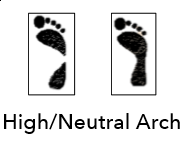
FOOT STABILITY: GOOD
ABSORBS SHOCK: POOR
This foot should be well-balanced for good control. Higher arches don’t absorb shock well, and benefit from lots of cushioning.

NEUTRAL/CUSHIONED shoes are light and responsive to allow the foot freedom to move, with plenty of cushioning to absorb shock.
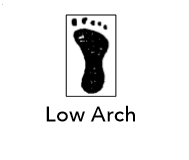
FOOT STABILITY: POOR
Too much foot wobble(overpronation)!
ABSORBS SHOCK: OK
Here, your foot needs help from your shoes for support to control movement.

STABILITY shoes have stiff inner midsole support and a nurturing platform to guide the foot for better support and control.
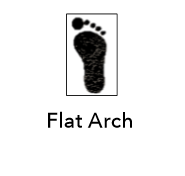
STABILITY: POOR
Too much foot wobble(overpronation)!
ABSORBS SHOCK: POOR Foot won’t absorb ground stress well
The flat foot is not made for running, and needs maximum support and cushioning
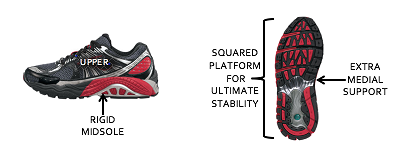
MOTION CONTROL shoes are heavily fortified for flat feet that aren’t well-suited for running, and for heavier runners who need extra shoe support.
Other Considerations:

If you have bunions or osteoarthritis in your foot, you can try to protect the bones by considering either stiff MOTION CONTROL shoes, or “rocker bottom” shoes. The curved shape of the rocker bottom shoe helps propel the foot forward with less foot motion for less stress for arthritic foot joints.
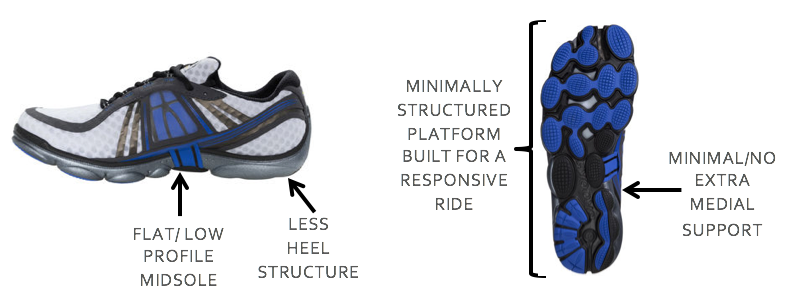
Extra-flexible minimalist shoes will provide poor cushioning and poor support and are not recommended for daily running. HOEVER, “low drop” shoes like the sample shown here are useful for runners who are midfoot/forefoot strikers. These shoes are also a safer alternative to barefoot shoes for people looking for that natural feel. They will have a deconstructed heel to promote landing more forward on your feet. The heel-to-toe drop will be less than 6mm. A few traditionally built shoes are also available in low drop configurations (less than 6mm) for midfoot strikers who want normal shoe structure.
OK NOW WHAT?
Once you have figured out which shoe category is best for your foot, you can officially start your shoe search!
- If you are not sure what arch type you have, see a foot or sports doctor.
- Go online and see what your shoe options are. Look at each major shoe company’s shoe models in the MOTION CONTROL, NEUTRAL/CUSHIONED, STABILITY, or MINIMAL categories.
- After you have familiarized with the shoes available in your chosen category, go to a local running store. This is the place where you will find a great selection per category, clearly identified, with knowledgeable staff to help guide you.
- INTRUDUCTION
- Running Shoe Basics
- Running Shoe Categories
- Running Shoe Categories in Pictures
-
CHOOSING RUNNING SHOES - How To Choose Running Shoes
- Shoe Checklist
RECENT BLOG POST
TAPING YOUR INJURIES!
Taping has long been used by physical therapists and athletic trainers to treat various sports-related musculoskeletal injuries. Kinesiology taping is a modernized method of taping, popularized by its
